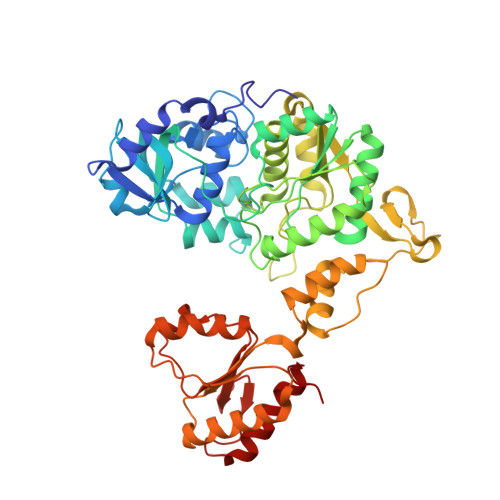The complex structures of ATP sulfurylase with thiosulfate, ADP and chlorate reveal new insights in inhibitory effects and the catalytic cycle.
Ullrich, T.C., Huber, R.(2001) J Mol Biol 313: 1117-1125
- PubMed: 11700067
- DOI: https://doi.org/10.1006/jmbi.2001.5098
- Primary Citation of Related Structures:
1JEC, 1JED, 1JEE - PubMed Abstract:
The ubiquitous enzyme ATP sulfurylase (ATPS) catalyzes the primary step of intracellular sulfate activation, the formation of adenosine 5'-phosphosulfate (APS). It has been shown that the enzyme catalyzes the generation of APS from ATP and inorganic sulfate in vitro and in vivo, and that this reaction can be inhibited by a number of simple molecules. Here, we present the crystal structures of ATPS from the yeast Saccharomyces cerevisiae complexed with compounds that have inhibitory effects on the catalytic reaction of ATPS. Thiosulfate and ADP mimic the substrates sulfate and ATP in the active site, but are non-reactive and thus competitive inhibitors of the sulfurylase reaction. Chlorate is bound in a crevice between the active site and the intermediate domain III of the complex structure. It forms hydrogen bonds to residues of both domains and stabilizes a "closed" conformation, inhibiting the release of the reaction products APS and PPi. These new observations are evidence for the crucial role of the displacement mechanism for the catalysis by ATPS.
Organizational Affiliation:
Max-Planck-Institut für Biochemie, Abteilung Strukturforschung, Am Klopferspitz 18a, D-82152 Martinsried, Germany. [email protected]























